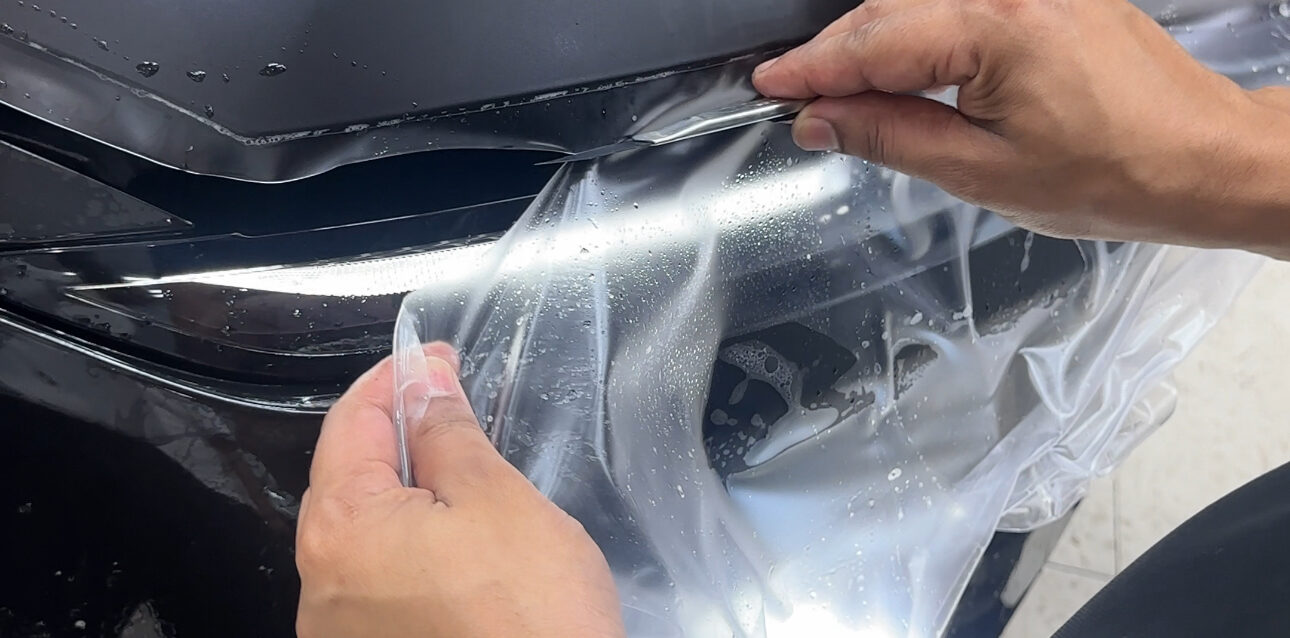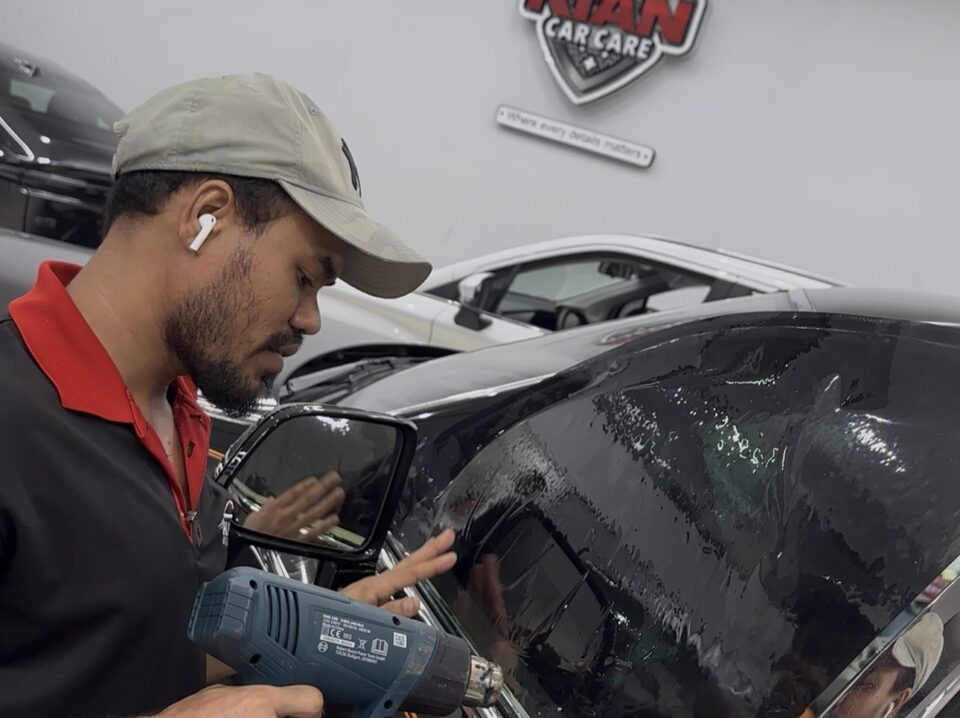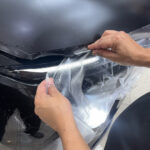In the world of car detailing, there are several techniques to sustain the aesthetics and quality of the paint. These solutions are a barrier against external aggressions of all kinds (stone or insect impacts, dust, hail, UV rays, droppings, rain, mud, etc.). For the protection of the bodywork of their vehicle, many owners choose the installation of PPF (Paint Protection Film) made of polyurethane elastomer. As a recognized expert in car detailing maintenance techniques, Formation Detailing presents the advantages of this solution over other methods in the same category.
PPF film and its advantages
Car protection film is a transparent solution to be applied to all painted surfaces of the bodywork that are particularly exposed (front bumper, rocker panels, door, rear-view mirror, hood, fender, etc.). Made of polyurethane, it is very strong and flexible to absorb the energy of low to medium intensity impacts of solid objects. PPF film is self-healing. This means that the surface of the protective film gradually returns to its original shape by repairing minor micro-scratches and scuffs with the heat of the sun. It is used to protect and sustainably maintain the factory condition of the bodywork of new or high-end vehicles. PPF film is resistant to UV rays that gradually cause the paint to turn yellow.
Thanks to its hydrophobic and non-stick properties, it offers protection against acid raindrops and bird droppings. It prevents mud and dust particles from clinging to the painted surfaces of the bodywork. Even if it is not infallible, PPF film is the best protection at the moment against gravel or hail impacts. To obtain satisfactory results, the application of the film on the car must be carried out by a confirmed specialist in car detailing. He will be able to effectively choose the type of PPF and the thickness of each coating wafer according to the areas to be covered. You have to use a professional cutter to have a tailor-made protection for each part.
Installation must be done under certain conditions of humidity, temperature and exposure to light. This prevents an unsightly result or the appearance of air bubbles between the painted surface and the film. For its intervention, the car detailing specialist also uses precise tools to which individuals do not necessarily have access. Our company offers PPF training to everyone interested in vehicle body care technologies and solutions. We enable entry-level professionals to improve their car wrapping know-how by learning from top experts.
The PPF training is also an excellent opportunity for people who are considering an initial career or a professional retraining project in the field of automotive detailing.
PPF Film vs Ceramic Treatment
Ceramic treatment is a chemical coating based on SiO2 (silica dioxide) that is applied to the bodywork to create a protective structure that is harder than paint. By bonding to the varnish, the product provides a transparent, shiny, hydrophobic and non-stick layer. While PPF film offers the same aesthetic result on any color of car paint, ceramic treatment is more suitable for protecting dark or black surfaces. Generally, the chemical coating is less durable than the polyurethane film (1 to 3 years of use compared to 5 to 10 years for the second solution).
PPF film is more effective than ceramic treatment in preventing damage to the bodywork due to scratches, scratches due to stone/snow/hail impacts, animal droppings, mud splashes, plant debris, etc. To prevent your vehicle’s paint from aging, chemical silica dioxide coating is the best choice. It offers the best protection against UV rays and oxidation elements. Once applied, the ceramic treatment is more difficult to remove than the PPF adhesive film.
Car wrapping or PPF film?
The car wrap allows the bodywork to be covered with a coloured film with a matte, satin or glossy finish. Unlike PPF film, this type of film cannot be installed on headlights. This is not the ideal car protection solution for the bodywork if you want to see the original paint. The wrapping has no self-healing property under the effect of heat.
PPF Film & Automotive Waxing
Using a natural wax or an artificial wax can help protect and nourish the paint on your vehicle’s body. This solution is much cheaper than applying PPF film. It allows the car’s upholstery to shine for a long time. However, waxing does not match the exceptional level of protection that polyurethane film offers against micro-scratches, dirt adhesion, the impact of stone chips, etc.
Depending on the recommendations of your car detailing professional, it may be necessary to wax your car every 3 months or once a year to keep the paintwork in impeccable condition.
PPF film stands out from other protections for its resistance and its ability to preserve the paint against external aggressions. But how long can a PPF film last? To learn all about its longevity and maintenance, check out our guide here.
Among the various protections available, PPF film stands out for its strength and durability. But which type of film is best for your vehicle? Discover a detailed comparison of the best PPF films for cars and make the right choice.








Comment
Hii